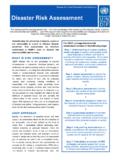Transcription of White Paper Disaster Management in Japan 2015 - …
1 The White Paper on Disaster Management is one of Japan s most noteworthy initiatives comprehensive reports on a regular basis. Other countries can learn from Japan s example and adapt this model to their own needs. - Ms. Margareta Wahlstrom, the Special Representative of the United Nations for Disaster Risk Reduction (UNISDR) Disaster Management in JapanWhite Paper2015 SummaryImages: Prize-winning Works of the 30th Disaster Management Poster Contest Japanin the field of Disaster risk reduction and Management . Few countries publish such Secretary-General for Disaster Risk Reduction/ Head of the United Nations Office Cabinet OfficeWHITE Paper ON Disaster Management IN Japan 2015 (SUMMARY) Foreword The White Paper on Disaster Management in Japan was first published in 1963 pursuant to the Disaster Countermeasures Basic Act. This, the 53rd edition, was reported to the National Diet after cabinet approval on June 19, 2015. This year's White Paper highlights the Third UN World Conference on Disaster Risk Reduction (WCDRR), which was held in Sendai in March of this year.
2 It was entitled the United Nations World Conference on Disaster Risk Reduction and Japan s International Cooperation on Disaster Risk Reduction. Ms. Margareta Wahlstr m, United Nations Special Representative of the Secretary-General for Disaster Risk Reduction, provided a message for this White Paper . This White Paper looks at the revisions made to Disaster countermeasures based on the heavy snows in February of last year, the landslide in Hiroshima in August, and the eruption of Mt. Ontake in September. It also provides information on the latest Disaster risk reduction initiatives implemented by the national government, local governments, and community residents, and introduces a case study on an earthquake centered in northern Nagano Prefecture in which no casualties occurred thanks to mutual community support. Even if we cannot eliminate the occurrence of natural hazards, we are confident that it is possible to mitigate Disaster impacts using both the instinct to survive and the wisdom with which human beings are naturally equipped.
3 In English, the Japanese terms bosai or gensai are translated as Disaster risk reduction, abbreviated DRR. At the last World Conference, we shared with the international community an important precept in Japan : DRR is our DNA. Based on the view that Disaster countermeasures are never costs, but rather investments in the future, the Government of Japan is wholeheartedly committed to achieving safe and secure living. We therefore intend to proactively request that all citizens of Japan maintain a reasonable awareness of natural threats, be well prepared in advance for the hazards they face, refuse to react to false alarms, and take actions to protect themselves from disasters. We hope that all readers of this White Paper gain an understanding of Japan s Disaster Management efforts and cooperate even further in their implementation. Eriko Yamatani Minister of State for Disaster Management , Japan July 2015 White Paper ON Disaster Management IN Japan 2015 (SUMMARY) Message from the Special Representative of the United Nations Secretary-General for Disaster Risk Reduction for the White Paper on Disaster Management "Bosai Hakusho 2015" Thanks to close cooperation between Japan and the United Nations, the Third United Nations World Conference on Disaster Risk Reduction (March 14-18) was successfully organized and concluded with positive outcomes.
4 In particular, the Sendai Framework for Disaster Risk Reduction 2015-2030 adopted by Member States at the Conference provides a strong foundation for the continued work on reducing Disaster risk and impacts for the coming 15 years. It is also an essential part of the Post-2015 Development Agenda and a clear boost for ongoing work on agreements later this year on climate and a new set of sustainable development goals. Through hosting the World Conference now on three occasions, (Yokohama, 1994, Hyogo, 2005, and Sendai, 2015), Japan has demonstrated its strong commitment to Disaster risk reduction and shared with the international community a wide range of lessons and good practices building on its own Disaster experiences. One of Japan s most noteworthy initiatives in the field of Disaster risk reduction and Management is the publication of this Bosai Hakusho, the White Paper on Disaster Management . This annual report provides comprehensive information including Disaster losses and relevant data and statistics; updates on the progress of recovery and reconstructions from specific disasters; policies and measures for Disaster Management by Disaster type; and insights into good practices on Disaster risk reduction/prevention at local/community level, and much more.
5 This White Paper is a well-established publication and few countries publish such comprehensive reports on a regular basis, totally dedicated to Disaster risk Management . This report helps us better understand how Japan has developed its Disaster risk Management policies and measures over a period of time. Other countries can learn from Japan s example and adapt this model of annual reporting to their own needs in the context of monitoring progress on implementation of the Sendai Framework for Disaster Risk Reduction, particularly under the four priority areas of action: 1: Understanding Disaster risk; 2: Strengthening Disaster risk governance to manage Disaster risk; 3: Investing in Disaster risk reduction and resilience; 4: Enhancing Disaster preparedness for effective response, and to Build Back Better in recovery, rehabilitation and reconstruction. The World Conference confirmed the importance of enhanced international cooperation and global partnership on Disaster risk reduction.
6 As the Head of UNISDR, I would like to extend our appreciation to Japan for its ongoing support and commitment to the area of Disaster risk reduction and reiterate my strong wish that Japan will continue to work with various stakeholders in the international community and demonstrate leadership in the global efforts towards the achievement of the goals of the Sendai Framework for Disaster Risk Reduction. Margareta Wahlstr m The Special Representative of the United Nations Secretary-General for Disaster Risk Reduction Head of the United Nations Office for Disaster Risk Reduction (UNISDR) White Paper ON Disaster Management IN Japan 2015 (SUMMARY) TABLE OF CONTENTS Introduction Part I The United Nations World Conference on Disaster Risk Reduction and Japan s International Cooperation on Disaster Risk Reduction (DRR): Toward Mainstreaming DRR in International Society 1 Chapter I Background to the United Nations World Conference on Disaster Risk Reduction 1 Section 1 International Decade for Natural Disaster Reduction and the First UN World Conference on Natural Disaster Reduction 2 Section 2 Establishment of the UNISDR and the Second UN World Conference on Disaster Reduction 2 Section 3 The Progress and Challenges of Initiatives Based on HFA 3 Chapter II The Third UN World Conference on Disaster Risk Reduction (WCDRR) 4 Section 1 Preparations for the Third WCDRR 4 Section 2 Overview of the Third WCDRR 4 Chapter III Japan s International Cooperation on Disaster Risk Reduction (DRR)
7 11 Section 1 Overview 11 Section 2 DRR Cooperation through the UN and the Other International Organizations 11 Section 3 DRR Cooperation in the Asia-Pacific Region 13 Section 4 Bilateral Disaster Risk Reduction Cooperation 15 Part II Status of Disaster Management Measures in Japan 18 Chapter I Status of Disaster Management Policies 18 Section 1 Disaster Management Systems and Disaster Preparedness 18 Section 2 Disaster Response and Preparedness 21 Section 3 Initiatives to Support Disaster Victims 26 Section 4 Promotion of DRR Activities in Coordination with Various Stakeholders 27 Section 5 Recovery and Reconstruction Measures 28 Section 6 Efforts to Promote National Resilience 29 Chapter II Status of Disaster Management Measures for Each Type of Potential Disaster 30 Section 1 Earthquake and Tsunami Disaster Management 30 Section 2 Volcano Disaster Management 31 Section 3 Sediment Disaster Management 33 Chapter III Measures for Nuclear Disasters 35 Section 1 Review of the Nuclear Regulation Authority (NRA) and the Cabinet Office Nuclear Disaster Management System 35 Section 2 Bolstering Nuclear Disaster Management and Radiation Monitoring Under the NRA 36 Section 3 Implementation of a Comprehensive Nuclear Disaster Drill in FY2014 37 White Paper ON Disaster Management IN Japan 2015 (SUMMARY) INTRODUCTION The Third UN World Conference on Disaster Risk Reduction (WCDRR) was held in Sendai, Miyagi Prefecture from March 14 to 18, 2015, four years after the Great East Japan Earthquake.
8 Over 100 ministers from 187 UN member states, including 25 heads of state and government, the Secretary-General of the UN, and the Administrator of the United Nations Development Programme (UNDP) participated, making it one of the largest UN conferences ever held in Japan . At the Conference, the Sendai Framework for Disaster Risk Reduction (SFDRR) 2015-2030 was formulated as a new initiative and guideline for Disaster risk reduction (DRR). With this, the initiatives of the international community entered a new stage aimed at the further promotion of the mainstreaming of Disaster risk reduction. In addition, related events were conducted such as symposiums and seminars on Disaster risk reduction and recovery, exhibitions, a DRR Industry Exhibition ( Bosai Industry Fair), study tours of Disaster -affected areas, and post-conference excursions to various locations in the Tohoku region. Through these initiatives, the Conference served to once again express Japan s gratitude to countries all over the world for the assistance received after the Great East Japan Earthquake, and allowed Japan to share the lessons learned and technologies Japan has developed through this and earthquake and other disasters.
9 The Conference also presented the current state of recovery and efforts related to the Great East Japan Earthquake and provided an important opportunity to contribute to the promotion of Disaster -stricken areas. Part I of the White Paper on Disaster Management in Japan 2015 highlights the "United Nations World Conference on Disaster Risk Reduction and Japan s International Cooperation on Disaster Risk Reduction." It looks at the background leading up to the implementation of the third WCDRR, the nature of the discussions that were held there, and how the SFDRR will be promoted to achieve even greater mainstreaming of Disaster risk reduction. Part II, on the "Status of Disaster Management Measures in Japan , looks at the state of measures and policy initiatives with a particular focus on those implemented in FY 2014, including: A description of revisions to the Disaster Countermeasures Basic Act adopted in November 2014 based on the great number of abandoned cars and transportation blockages caused by delays in snow removal operations during the heavy snows of February 2014.
10 A description of the revised content of and initiatives related to the Act on the Promotion of Sediment Disaster Countermeasures in Sediment Disaster Prone Areas, which was revised in November 2014 based on issues such as the numerous areas which were not designated as the sediment Disaster hazard areas and which had not been subject to basic surveys, and the insufficient communication of the risks of sediment disasters to residents. A description of the Plan concerning Specific Emergency Countermeasures and Activities for a Nankai Trough Earthquake, which was formulated and established in March 2015 at the Officers Meeting of the Central Disaster Management Council pursuant to Chapter 4 of the Basic Plan for the Promotion of Nankai Trough Earthquake Disaster Risk Reduction Countermeasures. A description of the revised content of the Basic Plan for the Promotion of Tokyo Inland Earthquake Emergency Countermeasures, which was revised and approved by the Cabinet in March 2015 pursuant to the Act on Special Measures against Tokyo Inland Earthquake.
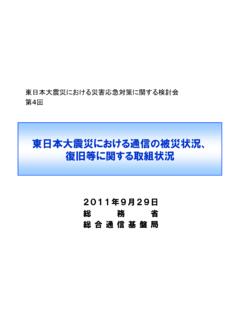
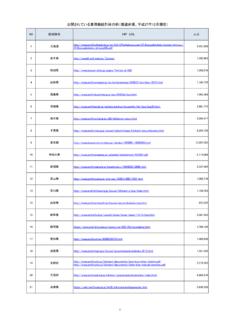

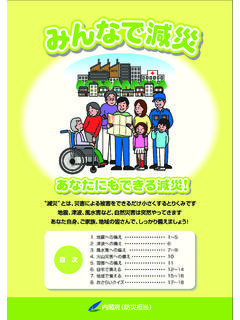
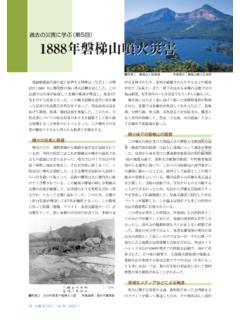

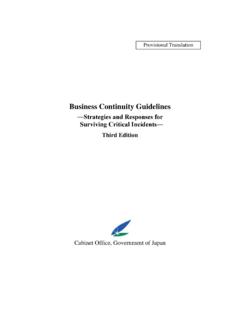
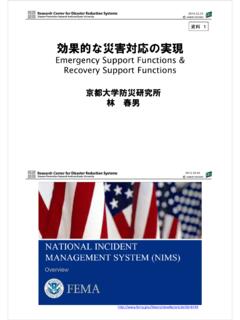
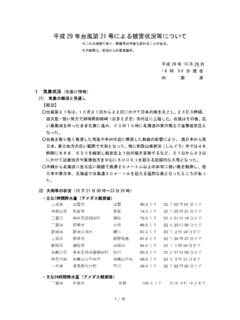


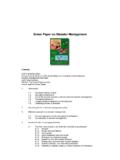
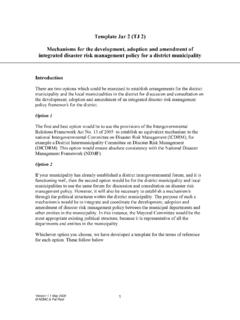


![Disaster Management Act [No. 57 of 2002]](/cache/preview/e/5/d/2/b/3/6/7/thumb-e5d2b36743b64ebe9204d7e874f734ad.jpg)


